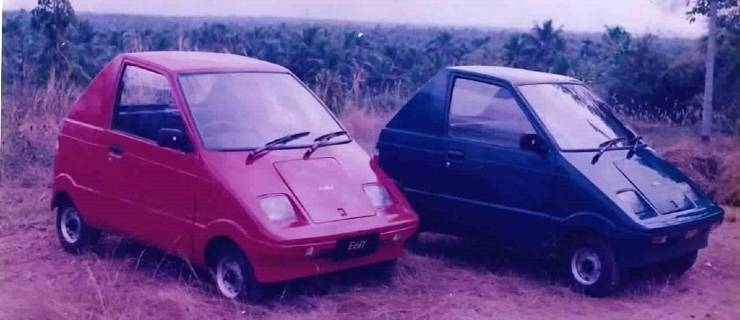Electrification of personal transport is the future. The automobile manufacturers and the government is working towards the electric future. Automobile manufacturers are trying to reduce the costs and increase the driving range while the government is trying to set up charging infrastructure and offer subsidies. You must think of electric vehicle in our country as the Tata Nexon EV. But India’s first electric vehicle was made back in 1993 and was called “Lovebird”.
Almost no one knows about the Lovebird as it had a short span of life. It was manufactured by the Eddy Electric series and they showcased the Lovebird at the Auto Expo that was held in Delhi. The vehicle also received some awards. Even the Indian government was in support of the Lovebird and they gave it a green signal. The vehicle also went into production. However, the manufacturer had to stop production and discontinue the Lovebird because of low sales volume.
The Lovebird was manufactured by Eddy Current Controls in collaboration with Yaskawa Electric Mfg. Co. Eddy Current Controls belonged to India while the Yaskawa Electric was from Tokyo, Japan. The vehicle was being produced at Coimbatore, Tamil Nadu and Chalakudy, Kerela.
Lovebird could seat only two persons at once. It ran on a direct current electric motor that got its power from a rechargeable portable battery. The battery technology was not so advanced. So, the manufacturer used a lead-acid battery pack, unlike a lithium-ion battery that manufacturers use now to power smart phones, power banks and electric cars.
The power output from the battery pack is not stated anywhere and there is also no information regarding the number of cells that the battery had. To smoothen out the throttle response, the Lovebird was fitted with an electronic chopper. This was done because electric vehicles produce all the torque at zero rpm. So, the vehicle would become very jerky when driving around in cities. However, we do know that the electric driving range of Lovebird was 60 km on a full charge.
Unlike modern electric cars, the Lovebird had a proper four-speed manual transmission and it also had a reverse gear. This was done to increase efficiency. Currently, only the Porsche Taycan and Audi e-Tron GT come with a two-speed gearbox. Rimac Nevera was supposed to have a two-speed gearbox but Rimac decided to ditch the second gear.
The battery of Lovebird took 8 hours to fully charge. There was no fast charging technology available at that time. The manufacturer aimed Lovebird towards people who lived in cities and needed a vehicle for small commutes. Lovebird was not meant to climb slopes above 15 degrees because the vehicle was not safe enough. However, this was not a big issue back then because most cities did not have many flyovers.
Why was it discontinued?
The sales figures did not even cross three-digit number. Power deficiency was a big thing back then and many cities still faced power failures due to which people did not consider buying an electric vehicle. Electric cars were just not accepted as much as petrol or diesel cars. The government also withdraw the subsidy which increased the price of the Lovebird quite a bit.
Source: cartoq.com









